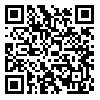Sat, Nov 29, 2025
[Archive]
Volume 8, Issue 1 (February 2021)
IJML 2021, 8(1): 35-43 |
Back to browse issues page
Download citation:
BibTeX | RIS | EndNote | Medlars | ProCite | Reference Manager | RefWorks
Send citation to:



BibTeX | RIS | EndNote | Medlars | ProCite | Reference Manager | RefWorks
Send citation to:
Fathi E, Shahedi A, Hosseinisharifabad M, Vakili M. Protective Effects of Curcumin on Sperm and Stereological Parameters in Testes of Formaldehyde-Exposed NMRI Mice: An Experimental Study. IJML 2021; 8 (1) :35-43
URL: http://ijml.ssu.ac.ir/article-1-368-en.html
URL: http://ijml.ssu.ac.ir/article-1-368-en.html
Department of Biology and Anatomical Sciences, Shahid Sadoughi University of Medical Sciences, Yazd, Iran
Abstract: (1497 Views)
Background and Aims: Formaldehyde (FA) exposure is an important cause of cellular injury and oxidative damage in testis, leading to infertility. This study aimed to assess the protective effects of curcumin on sperm and stereological parameters in testes from formaldehyde-exposed NMRI mice.
Materials and Methods: At 6-8 weeks of age, 24 adult male NMRI mice weighing 30-35 g were categorized into four groups (n=6) based on the treatment they received: Group І (control) received no treatment, group ΙΙ received FA (10 mg/kg), group ΙΙΙ received FA (10 mg/kg) and curcumin (100 mg/kg), and group IV (Solvent) received dimethyl sulfoxide (0.2 ml/day). Materials were administered intraperitoneally for 35 days. After excision, epididymis tissues were placed in 1 mL aliquots of Ham’s F10 medium at 37˚C for 20 min and were then used in analyses of sperm parameters. Testes were fixed and stained with Hematoxylin & Eosin to investigate stereological indices. We also determined lipid peroxidation levels using malondialdehyde assays.
Results: Mean sperm parameters (count, motility, viability, and morphology) differed significantly between groups ΙΙ and ΙΙΙ (p≤0.001). Stereological indices, including Leydig and spermatogonia cell numbers and surface-to-volume ratios of seminiferous tubules were significantly higher in group ΙΙΙ than in group ΙΙ (p≤0.001) . Finally, malondialdehyde levels in group III were significantly lower than in group II (p=0.001).
Conclusions: The data showed that the curcumin, as an antioxidant, reduced FA-induced damage in sperm parameters and stereological indices in mice testes.
Materials and Methods: At 6-8 weeks of age, 24 adult male NMRI mice weighing 30-35 g were categorized into four groups (n=6) based on the treatment they received: Group І (control) received no treatment, group ΙΙ received FA (10 mg/kg), group ΙΙΙ received FA (10 mg/kg) and curcumin (100 mg/kg), and group IV (Solvent) received dimethyl sulfoxide (0.2 ml/day). Materials were administered intraperitoneally for 35 days. After excision, epididymis tissues were placed in 1 mL aliquots of Ham’s F10 medium at 37˚C for 20 min and were then used in analyses of sperm parameters. Testes were fixed and stained with Hematoxylin & Eosin to investigate stereological indices. We also determined lipid peroxidation levels using malondialdehyde assays.
Results: Mean sperm parameters (count, motility, viability, and morphology) differed significantly between groups ΙΙ and ΙΙΙ (p≤0.001). Stereological indices, including Leydig and spermatogonia cell numbers and surface-to-volume ratios of seminiferous tubules were significantly higher in group ΙΙΙ than in group ΙΙ (p≤0.001) . Finally, malondialdehyde levels in group III were significantly lower than in group II (p=0.001).
Conclusions: The data showed that the curcumin, as an antioxidant, reduced FA-induced damage in sperm parameters and stereological indices in mice testes.
Type of Study: Research |
Subject:
General
Received: 2020/07/13 | Accepted: 2020/09/23 | Published: 2021/03/4
Received: 2020/07/13 | Accepted: 2020/09/23 | Published: 2021/03/4
Send email to the article author
| Rights and permissions | |
 |
This work is licensed under a Creative Commons Attribution-NonCommercial 4.0 International License. |







